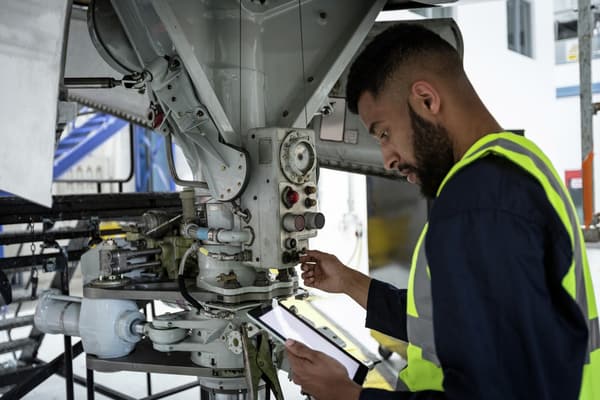
When entering a new market for any kind of product, the differentiator is usually measured by the pain point of the customer…. how do you help them eliminate the pain they are having? The challenge for disruptive and new tech thinking is a bit more difficult, how do you get customers to ask for something they don’t know will actually help them?
In the Maintenance, repair and mobile inspection market, users and vendors are starting a diligent move toward application development for these tasks in the field and in the facilities. This evolution marks an improvement in service delivery, asset management, trend analysis and, most importantly, worker safety. With the advent of IoT, condition and usability will also be trackable and high costs of maintenance can be mitigated by managing the inspection information on a timely basis. But, what is the most effective, efficient way to collect data that increases worker safety as well as data integrity and can be used all day everyday anywhere in the world?
So, why not add a voice interface to the mix? Why not make it hands free? Keep your hands on your wrench, rather than looking down and pushing buttons on a screen. By voice enabling the interface to these mobile applications, collecting data becomes a more powerful tool on many levels. First, the process is the same for everyone using it. The interface requires processes to be done in the correct sequence of steps, with voice directed input on method and condition. This allows management to do trend analysis, remove work arounds and manage employees more effectively.
Second, by keeping users’ eyes on their work and not requiring constant referral to screens to fill in data, safety increases significantly; as well as general productivity of everyone using the application. The staff performing the inspections with the new voice interface generally regard the process as easier to follow and worker satisfaction also increases.
Third, most applications for mobile data collection are installed and run on mobile devices as thick client applications; meaning they aren’t connecting into the cloud to use them, they are installed on the mobile devices. By having a device-based implementation for the voice interface, workers can be miles from any connectivity and still collect data all day long. These devices are usually, but not limited to, laptops, tablets, smartphones and other smart, mobile devices that can install and run a robust mobile application. The ability to have an intelligent voice client on that device – regardless of connectivity – allows voice enabled applications to fit a wide range of MRO deployments in the field.
I addition to these critical features, voice automation can provide detailed error messages, warnings about data that falls out of acceptable ranges, pre-load information already collected in other screens as well as provide detailed instruction for new or troublesome event reporting.
Adding voice control allows for smoother operations and more efficient use of inspection personnel – since it is possible to seamlessly integrate responses within a predefined maintenance or inspection procedure while utilizing the latest and greatest hardware solutions.
As the trend for wearable glasses continues, a voice interface integrating these mobile applications in combination with glass functionality becomes very exciting. Voice enabling the capabilities in unison provides terrific capabilities and future proofs the mobile application. This flexibility and capability allow for greater attention to detailed work and focus on the task at hand, reducing time wasted moving between applications, errors and overall performance.
MRO applications are making an enormous impact in industries such as aviation and aerospace, logistics/transportation, automotive, energy, field asset management, quality control, and many others. As these users and their management start to deploy and understand the powerful tools available for them to move into a more productive, error free and worker safety?
We can speak to how we can apply this to MRO industries with exceptional opportunities for improved safety, productivity and user empowerment. MRO operations should be asking for voice interfaces, but right now, no one is asking for it because they don’t know it’s ready – today.